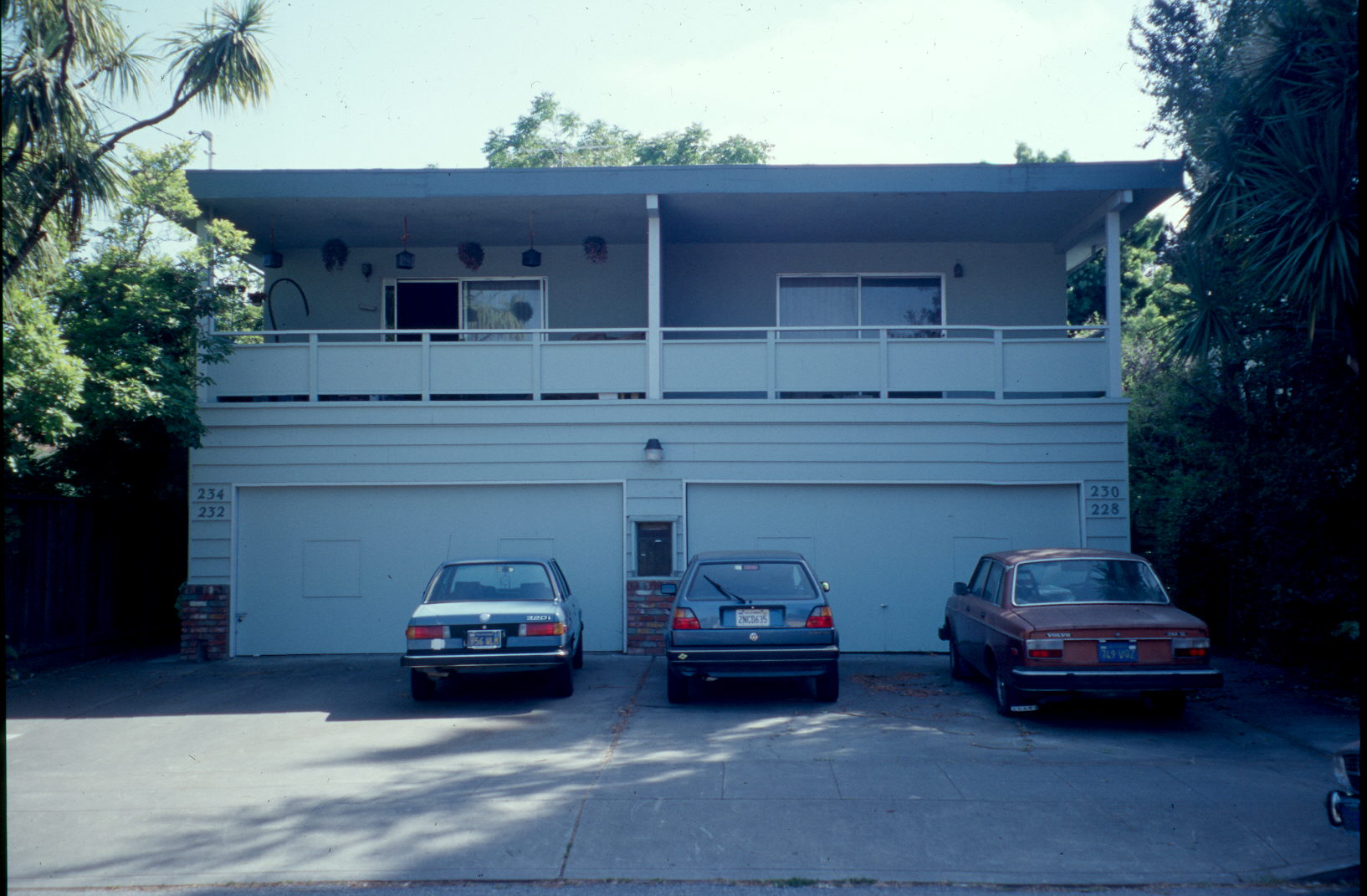My mom and dad bought their first house in Palo Alto for about $16,000. At the time, it cost about five cents per hour to park downtown. Today, that same house would cost nearly $3 million and it’s free to park downtown. In the space of a generation, we have completely solved our affordable housing problem – for our cars.
In 2019, surveyors counted 313 homeless people in Palo Alto, up 99 percent from 2013.
They found no homeless cars.
How did Palo Alto become a city of expensive housing and free parking? In 1951, Palo Alto adopted a new zoning ordinance. The new law limited housing and required parking. In subsequent years, Palo Alto passed strict laws demanding more and more parking at more and more land uses. By 2004, a two-bedroom apartment could not be built unless it included 2.2 parking spaces.
When Palo Alto first adopted minimum parking laws, Ronald Reagan and Diana Lynn were starring in Bedtime for Bonzo. Like Bedtime for Bonzo, Palo Alto's minimum parking regulations were surely well-intentioned, and considered modern at the time. Unfortunately, minimum parking laws haven’t aged as well as Bedtime for Bonzo. Minimum parking laws have turned out to be a tragedy. A large body of research has now shown that minimum parking regulations increase housing costs, harm low-income families, damage our economy, and increase vehicle trips and pollution.
The cost of building, operating, and maintaining a parking garage in Palo Alto typically exceeds $300 per month per parking space, every year for the expected 35-year useful life of the structure. At first, builders bear this cost, but they pass the costs along in the form of higher rents. A study of Seattle-area apartments concluded that parking costs increase rents by approximately 15 percent, or $246 per month for each occupied apartment.
Research by Santa Clara University’s C.J. Gabbe and UCLA’s Gregory Pierce found that nationwide, bundling the cost of a garage space into rents “adds about 17 percent to a unit’s rent.” “Minimum parking requirements create a major equity problem for carless households,” they write. The regulations force carless – generally low-income – people to pay higher rents for parking they don’t need and can’t use.
For many, a 17 percent rent increase is the difference between a roof over your family’s head and an eviction notice.
Conversely, removing minimum parking regulations lowers rents and home prices. UC Berkeley researchers Wenyu Jia and Martin Wachs found that in San Francisco, 20 percent more households could qualify for loans on condominiums without parking.
To make housing more affordable, many cities have adopted three reforms:
- Manage curb parking, using prices and/or residential parking permits, to ensure that residents of new buildings can’t overcrowd on-street spots. For example, Tucson allows each property to have no more than one residential parking permit for each legal curb parking space in front it – regardless of how many homes are added to the property.
- Return any revenue generated by pricing curb parking to the neighborhood where it is generated, to pay for public improvements. Local revenue return helps make parking pricing popular.
- Follow the advice given by Institute of Transportation Engineers International President Bruce Belmore: “Eliminate mandatory minimum parking requirements.” Berkeley, Emeryville, Fremont, Hayward, Lancaster, Los Angeles, Mountain View, Oakland, Sacramento, San Diego, San Francisco, and Santa Monica have already removed minimum parking regulations in some or all neighborhoods.
Removing minimum parking laws makes housing more affordable and sustainable. For example, at Berkeley’s Gaia Building the developer built 42 parking spaces to serve 91 apartments, a theater, a café, and office space. The Gaia Building’s car-free homes rent for substantially less than comparable apartments nearby that come with parking included. For those who want it, parking is available, for $230 per space per month. The result? 237 adult residents with just 20 cars.
Legalizing car-free homes lets people who cannot afford a car save money on parking. In return, they spare all of us from traffic congestion and pollution.
Minimum parking laws have been a planning disaster. They have raised rents and worsened homelessness. They are unfair, inequitable, economically damaging, and environmentally destructive. By repealing these misguided laws, some cities have done their part to solve our shared regional crises: homelessness, traffic jams, dirty air, and climate change. But too many haven't – including Palo Alto.
That’s why the state legislature should step in, by passing Assembly Bill 1401. AB 1401 prohibits minimum parking regulations within half a mile of transit stations, with the exception of spaces for electric car charging and people with disabilities. The law would apply to all public agencies in counties with a population of 600,000 or more. In counties with a population of less than 600,000, it would apply only to cities with a population of 75,000 or more.
AB 1401 will let individuals decide whether they want to rent a home with parking, or without. My friend Bill, who is blind, will no longer be forced to pay higher rents for parking spaces he doesn’t want and can’t use. Or consider the 19 percent of California community college students who suffered from homelessness in 2019. For many of them, being allowed to rent a more affordable car-free apartment will mean sleeping in a safe bed instead of on the streets.
AB 1401 lets individuals decide whether they want to rent a home with parking, or without. That's fair. People who cannot afford or choose not to own a car should not have to pay anything for parking.
***
Patrick Siegman is a transportation planner and economist. He was born and raised in Palo Alto. He tweets at @PatrickSiegman





